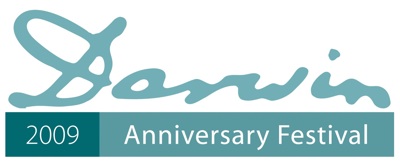Sarah Hrdy, Health and society, Tue 7 July
Duration: 37 mins 18 secs
Share this media item:
Embed this media item:
Embed this media item:
About this item

| Description: |
Darwin and the ascent of emotionally modern man: how humans became such hypersocial apes
Professor Sarah Blaffer Hrdy (University of California, Davis, USA) Summary: As Darwin observed early on, humans are remarkably similar to other apes. Like their larger brained, bipedal ‘cousins’, great apes also use tools and exhibit a rudimentary understanding of causality and ‘theory of mind’. However, other apes fall short of humans in intention-reading and cooperation. In this lecture I explain why I am convinced that the psychological and emotional underpinnings for apes to care so much about what others intend and feel emerged as a byproduct of shared parental and alloparental care and provisioning of young, what sociobiologists refer to as ‘cooperative breeding’. According to widely accepted chronology, large-brained, anatomically modern humans evolved around 150,000 years ago, and behaviourally modern humans, capable of symbolic thought and language, more recently still, between 50,000–80,000 years ago. But (I argue) emotionally modern humans, newly interested in the mental and subjective states of others and characterized by prosocial impulses to give and share, emerged far earlier along with what, for an ape, was a peculiar mode of rearing young. |
|---|
| Created: | 2009-11-30 15:26 |
|---|---|
| Collection: | Darwin Festival 2009 |
| Publisher: | University of Cambridge |
| Copyright: | University of Cambridge, Darwin Festival 2009 |
| Language: | eng (English) |
| Distribution: |
World
|
| Keywords: | Darwin; evolution; society; Sarah; Hrdy; brain; evolution; bipedalism; great; apes; theory; of; mind; sociobiology; cooperative; breeding; reproductive; strategies; infanticide; |
| Explicit content: | No |
| Aspect Ratio: | 4:3 |
| Screencast: | No |
| Bumper: | /sms-ingest/static/new-4x3-bumper.dv |
| Trailer: | /sms-ingest/static/new-4x3-trailer.dv |
| Abstract: | Biography: Sarah Hrdy is Professor Emerita at the University of California-Davis. A former Guggenheim fellow, she has been elected to the California Academy of Sciences, the National Academy of Sciences, and the American Academy of Arts and Sciences. She is the author of five books including: The Black-man of Zinacantan: A Central American Legend (1972); The Langurs of Abu: Female and Male Strategies of Reproduction (1977), the first book to examine the reproductive strategies of nonhuman primates from the perspective of both sexes; The Woman that Never Evolved (1981; new edition, 1999), selected by the New York Times as one of the Notable Books of the Year; and Mother Nature: A history of mothers, infants and natural selection (1999), which won the Howells Prize for Outstanding Contribution to Biological Anthropology and was chosen by both Publisher's Weekly and Library Journal as one of the ‘Best Books of 1999’, and Mothers and Others: The evolutionary origins of mutual understanding (Belknap Press of Harvard, spring 2009), a book about the cognitive and emotional implications of humankind’s deep legacy of cooperative breeding. She is also co-editor of Infanticide: Comparative and Evolutionary Perspectives, selected by Choice as one of the ‘Outstanding Academic Books’ for 1984, and co-editor with Sue Carter and others of Attachment and Bonding: A New Synthesis (2005). She lives with her husband, Dan, on their walnut farm in northern California. |
|---|---|
Available Formats
| Format | Quality | Bitrate | Size | |||
|---|---|---|---|---|---|---|
| Flash Video | 320x240 | 262.74 kbits/sec | 71.78 MB | View | Download | |
| iPod Video | 480x360 | 505.36 kbits/sec | 138.06 MB | View | Download | |
| QuickTime | 384x288 | 844.0 kbits/sec | 230.58 MB | View | Download | |
| MP3 | 44100 Hz | 125.05 kbits/sec | 33.95 MB | Listen | Download | |
| Audio Interchange File Format (AIFF) | 1.34 Mbits/sec | 374.29 MB | Listen | Download | ||
| Auto * | (Allows browser to choose a format it supports) | |||||

